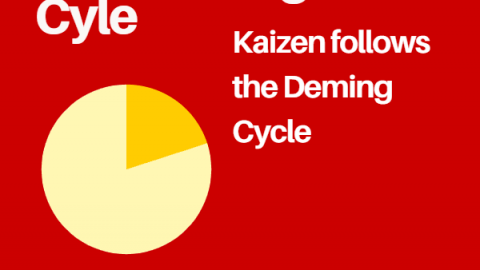Common Cause Variation vs Special Cause Variation
What are the causes of variation in quality control or what are the types of variation? The term “variation” is widely used in statistics, quality management, genetics, and even in biology. It refers to the measurement for a group of numbers that spread out from their average value. Every measured data set involves some degree of variation even if the degree is slight. It is a numerical value specifies how widely data in a data set vary. A small variance shows that data are closer to the average and a high variance shows that data are very different than each other. There are two causes of variation in quality control which are Common Cause Variation and Special Cause Variation. In this article, we will give examples of common cause of variance and special cause of variance for the control chart.
Table of Contents
Types of Variation
Classification of variance is very important in project quality management. Common cause of variance and special cause of variance have different origins. In order to take action to improve your process or prevent future problems related to variations, you must know the type of variation that will affect your processes. Walter A. Shewhart developed control charts to distinguish both variations in the 1920s. He discovered that all the processes involve common cause variation but some processes which are not in control show special cause variation.
Common Cause Variation
According to the studies of Walter A. Shewhart and W. Edwards Deming common causes can be called natural patterns. Common cause of variances are quantifiable, expected, natural, usual, historical and random causes of variances in a process. Common cause variation shows the process potential when the special causes of variance is eliminated from the system. On a control chart, common cause variation indicates a random distribution around the control limit (or average limit).
It is possible to predict them probabilistically but specific actions cannot be taken to prevent the occurrence of common cause of variances. Therefore a management action is required to make an extensive change on the system to reduce the amount of common cause of variances.
Simply put, common cause of variances are normal, consistent and inherent in the process which can not be eliminated.
Note that if a process containing only common cause variation is said to be in statistical control.
Examples for Common Cause Variation
Assume that in a hotel construction project, you estimated 10 days to complete a formwork activity. Due to the climatic conditions, it is completed in 11 days. The completion time has not deviated too much from the mean. This is an example of a common cause variation.
Another example is that your team is working on a software development project. Due to the lack of coordination between team members, unclear scope definition and unexpected errors, you will not complete the project on time.
Below can be some examples of common cause of variance within a project
- Unclear scope definition
- Inadequate design
- Poor management
- Insufficient procedures
- Weather conditions
- Temperature
- Humidity
- Computer response time
- Inadequate working conditions
Special Cause Variation
Unlike the common cause of variance, special cause of variance refers to known factors that have effects on a process. W. Edwards Deming introduced this concept. Special cause of variance are the unusual, non-quantifiable, unexpected variances that were not encountered before in a process. Mostly a specific factor such as a rapid change in conditions or input parameters causes special cause variations.
On a control chart special causes of variance indicates a non-random distribution around the control limit (or average limit).
Special causes of variance can usually be eliminated with adjustments to the processes, components or methods. They may cause serious problems if they are not eliminated. Special causes of variances are not inherent and usually originate from technical problems.
Simply put, special cause of variance are caused by unpredictable factors that can not be foreseen with the help of historical experience and records.
After analyzing an example for common cause variation, we will analyze an example of special cause variation.
Examples for Special Cause Variation
Assume that you are a project manager of a bridge construction project and you estimated 10 days to complete an excavation activity. When you started excavation, a technical problem occurred in the hydraulic system of the excavator. This malfunction delayed this activity for about 20 days. The problem is solved by fixing up the hydraulic system. This is an example of a special cause variation.
Another example is that you were working with a shipping company to transport a generator for a hospital renovation project. Estimated time of arrival was 2 days. But the arrival of the generator took four days because of an accident on the highway.
Below can be some examples for special causes of variances within a project
• Machine fault.
• Power surges
• Operator absent/ falls asleep
• Computer fault.
Summary
While analyzing a data set, we see that all the data are not close to each other. There may be some great and small differences between them. The variance shows how data are distributed around an expected or an average value. If the degree of variance is close or equal to zero this means that all the data are the same or very close to each other. A high degree of variance indicates that all the data are far away from each other.
Common and special causes are the two distinct origins of variation in a system. In a process, it is important to determine the type of variance because the course of action you take will depend on the types of variation. Using a control chart helps to distinguish Common Cause of Variance and Special Cause of Variance.
In this article, talked about the causes of variation in quality control and make a review for Common Cause Variation and Special Cause Variation. Note that this is an important subject tested on the CAPM and PMP Certification exams. We hope that it will be useful for passing PMP and CAPM exams.
See Also
Control Chart versus Run Chart

Since 2004 I work for ICT Management which provides worldwide quality management service. Passionate about new technologies, i have the privilege to implement many new systems and applications for different departements of my company. I have Six Sigma Green Belt.











I like this post, enjoyed this one thanks for putting up.